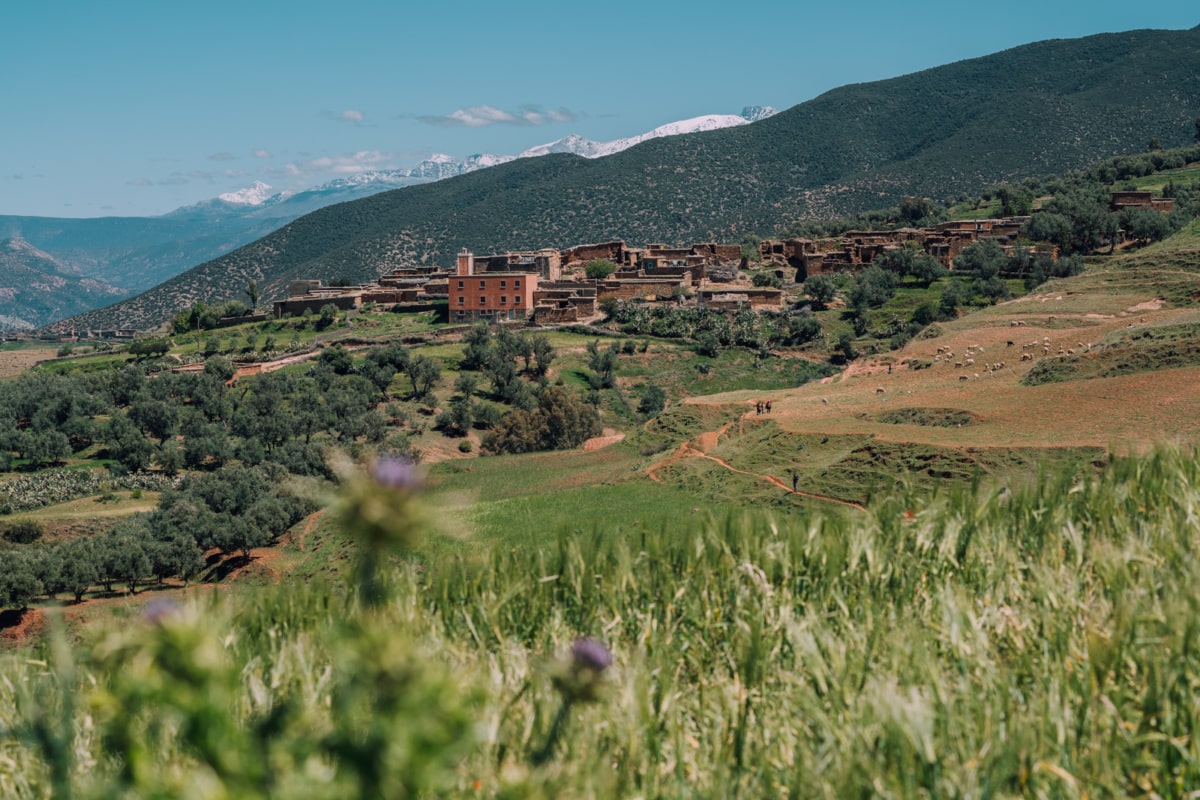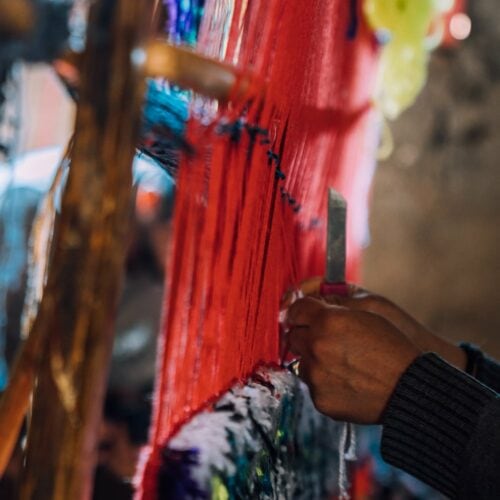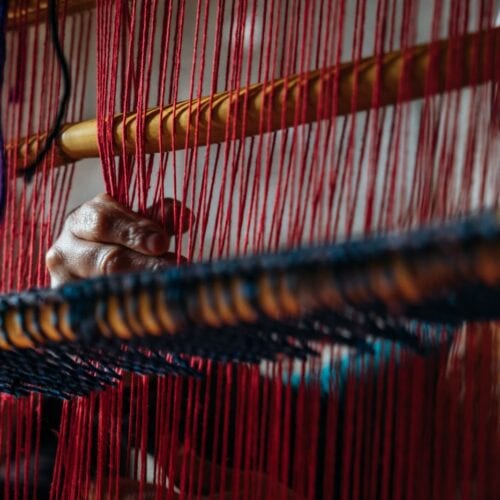It’s the first night in the guesthouse, high in the Atlas Mountains, and there are seven of us crammed into a room with sleeping bags. We’re all on the floor—no beds—sharing a room in someone’s home.
And then it dawns on me: I’m already disrespecting the culture.
In Muslim cultures, unmarried men and women aren’t supposed to sleep in the same room. And here I am, on day one, at a Berber household in a village in the mountains of Morocco, doing just that.
And they allow it.
What the heck? Is just being here a huge mistake? After years of living in hostels, sharing a room with friends of every gender is unthinkably normal to me, but the seven of us are violating their cultural norms in a pretty big way.
Have I already disobeyed the first rule of responsible travel?
The next morning, a few hours into our trek, I’m chatting with my guide—a local Moroccan who grew up in these villages—about the people and the culture. I’m filled with curiosity. Suddenly he stops, quietly observing the mountains before him, and then turns to me and says, “I’m just glad you’re here. Most people don’t even think to ask these questions.”
And, in that moment, all my doubts vanish.
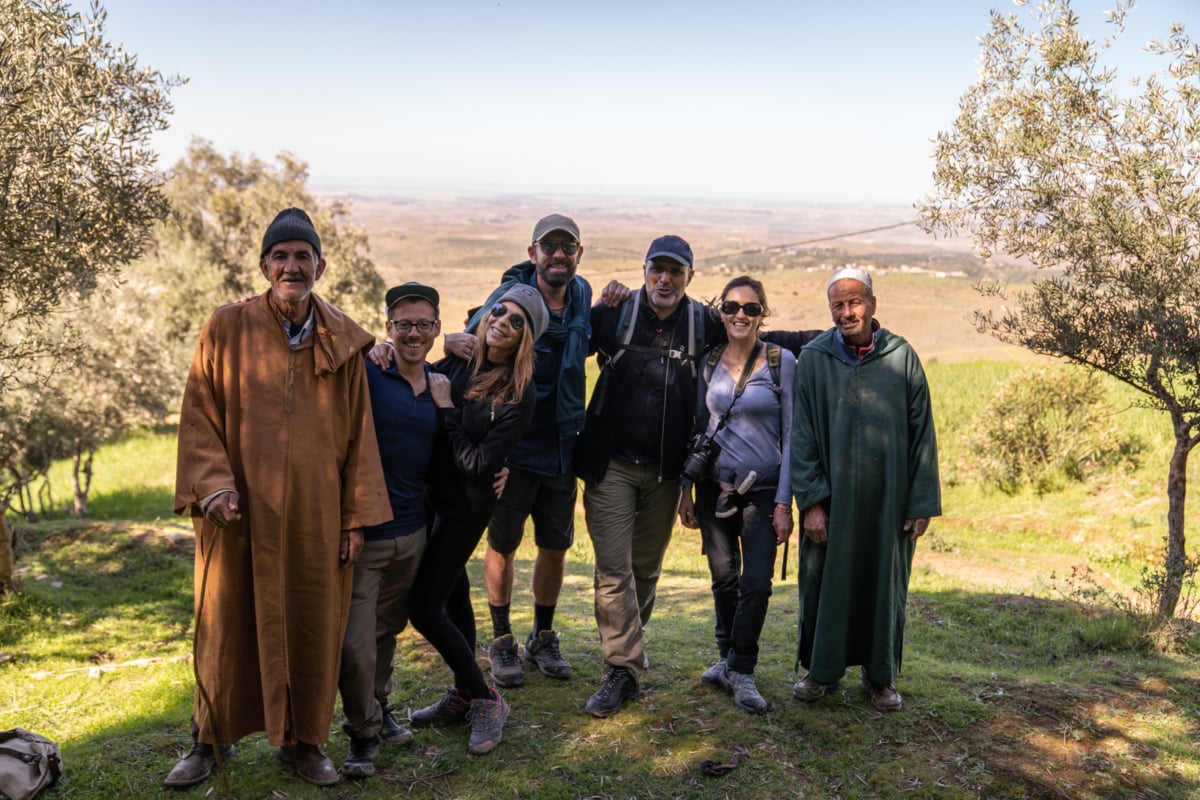
From then on, it was as if a door had been opened. There was space for discourse. Once we broke the silence by vocalizing the awkward questions we all harbored, we were able to engage in authentic conversations about what it means to travel sustainably, especially in regards to this trip.
Especially in regards to visiting local tribes and how best to create meaningful experiences through travel without changing or harming the local way of life.
We talked about our culture and theirs, our different life experiences, and all the things we take for granted. We talked about money matters, where it goes, how much the tribes get from hosting us, and how it benefits them.
We talked about what it actually means to travel sustainably, especially when it comes to protecting indigenous cultures.
When Nomadic Tribe asked me to join them on their 5-day hiking trip in Morocco’s Atlas Mountains with the local Berber tribes, I had a lot of questions before I agreed to tag along. And they honestly didn’t have all the answers, because, quite frankly, I don’t think anybody does.
Sustainable travel is incredibly complex and nuanced. And anybody who’s willing to admit they don’t have all the answers—but are working to figure it out—gets a gold star in my book.
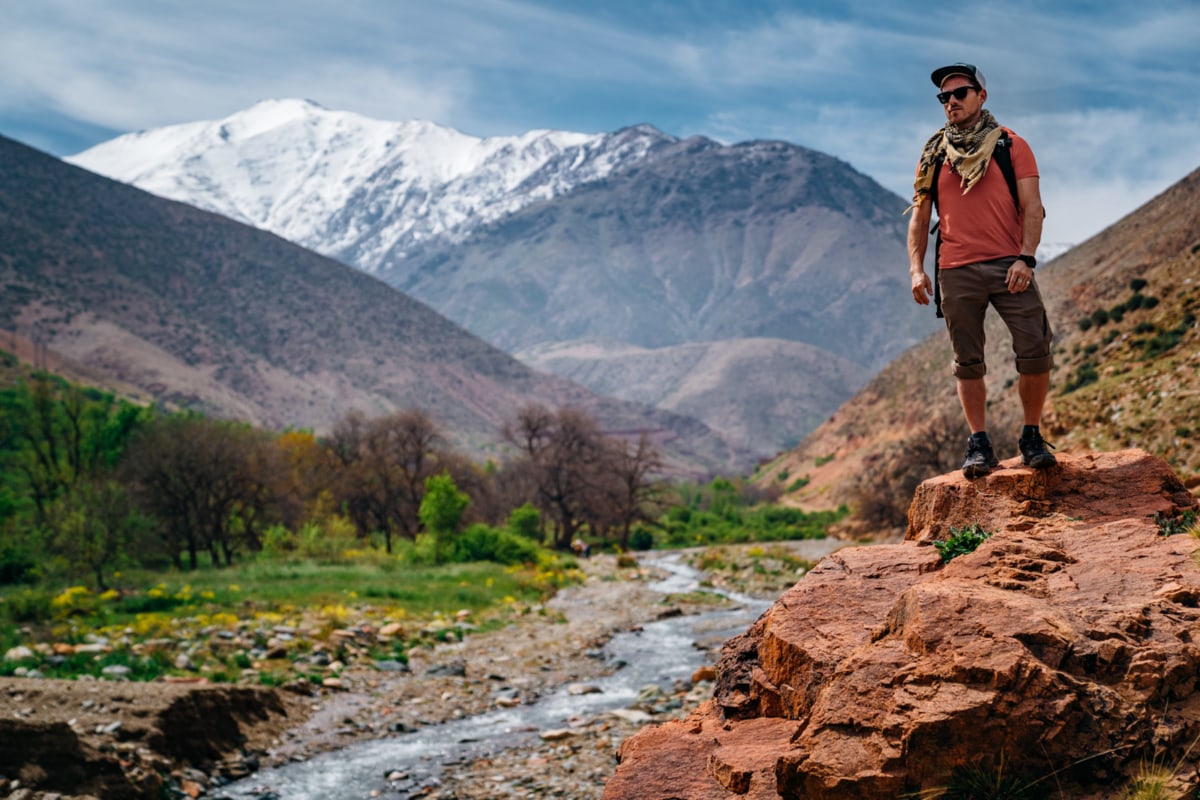
Who is Nomadic Tribe?
Nomadic Tribe is an app-based community for travelers in search of life-changing journeys through interactions with indigenous cultures.
They’re a social network, information platform and OTA all rolled into one. Once you decide what country or tribe you want to visit, they’ll connect you with a vetted local guide for the ultimate local experience.
Nomadic Tribe subscribes to the UNWTO Global Code of Ethics for Tourism, and they follow this code closely.
Last year they invited me to Morocco to trek ~60 miles through the Atlas Mountains, staying in Amazigh villages along the way. You might know the Amazigh as the “Berbers,” but here’s your first lesson: “Berber” is actually considered to be a derogatory term because, linguistically, it stems from the word “barbarian.”
We used the names interchangeably throughout the trip, as the word “Berber” has been so deeply implanted in our brains, and it’s something we fought and struggled with on a daily basis. Trying to reframe our perspective and speech patterns was more difficult a task than we thought it would be.
Who Are the Amazigh?
The Amazigh tribes have roamed the Atlas Mountains and all over Morocco since 2,000 BCE. While on the move they farmed, traded, and lived off the land to provide their livestock with food, shelter, and water. They collect plants to use for dyes, which is why you see intricate and colorful textiles all over the country.
Despite being semi-nomadic, the Amazigh tribes do have permanent villages they call home. And this is how I became acquainted with some tribes and their way of life.
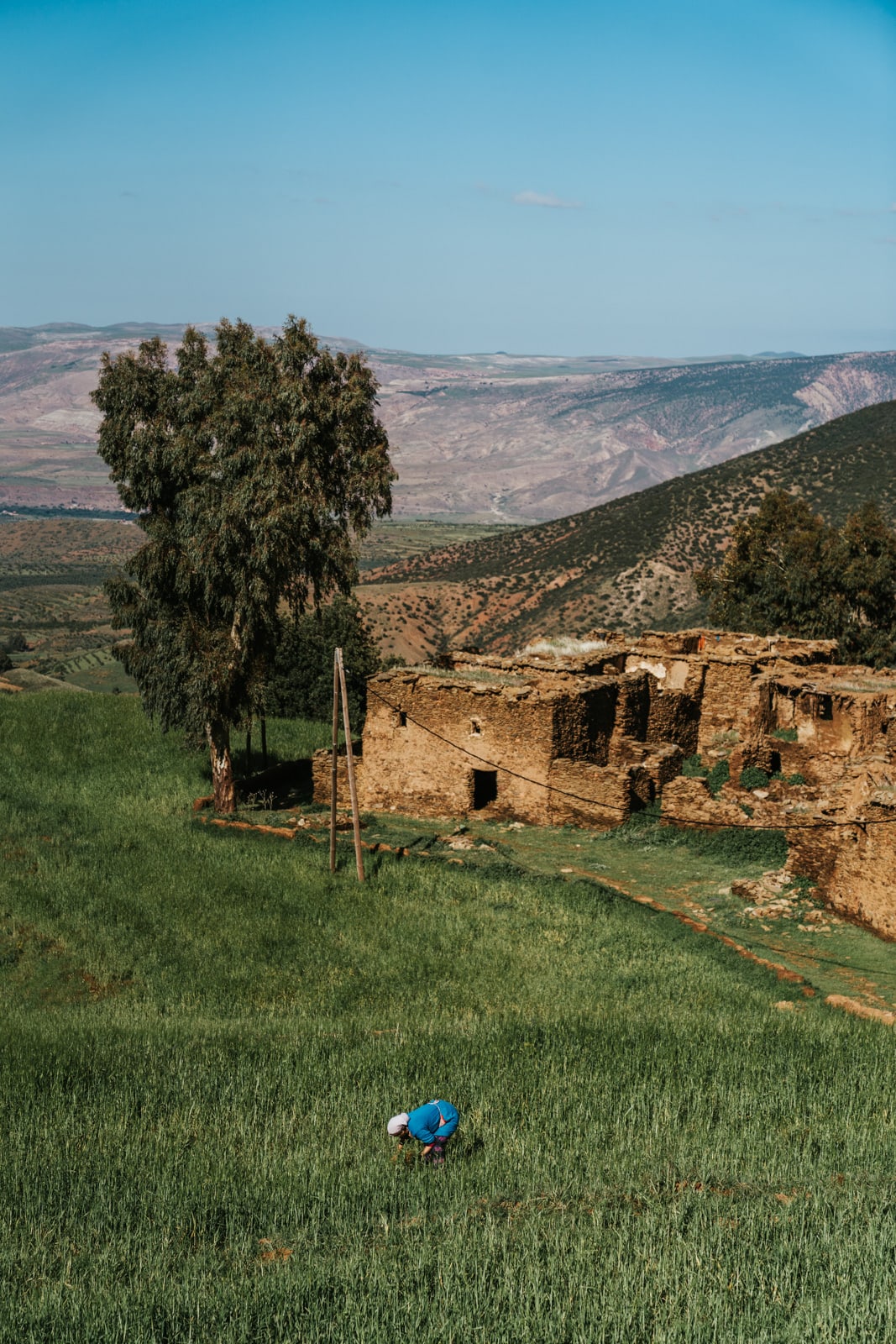
If you want a sustainable travel experience with indigenous tribes, you need to ask a lot of hard questions, and you’re probably not going to always get it right. So here are some things to consider.
How Do I Participate in Indigenous Culture While Still Being Respectful?
Before my trip, I wanted to know what kind of experiences I’d be having, and how I’d be actively engaged with the tribe. There’s a fine balance between asserting yourself into a culture and respectfully engaging in it.
Amazigh tribes are nomadic, and so it makes sense that my trip involved lots of walking every day…and it wasn’t always—okay, it was never—a stroll in the park. Sometimes I’d start out on a fairly flat plain before ascending hours into the hills. But with views like this over the High Atlas Mountains, it was worth it.
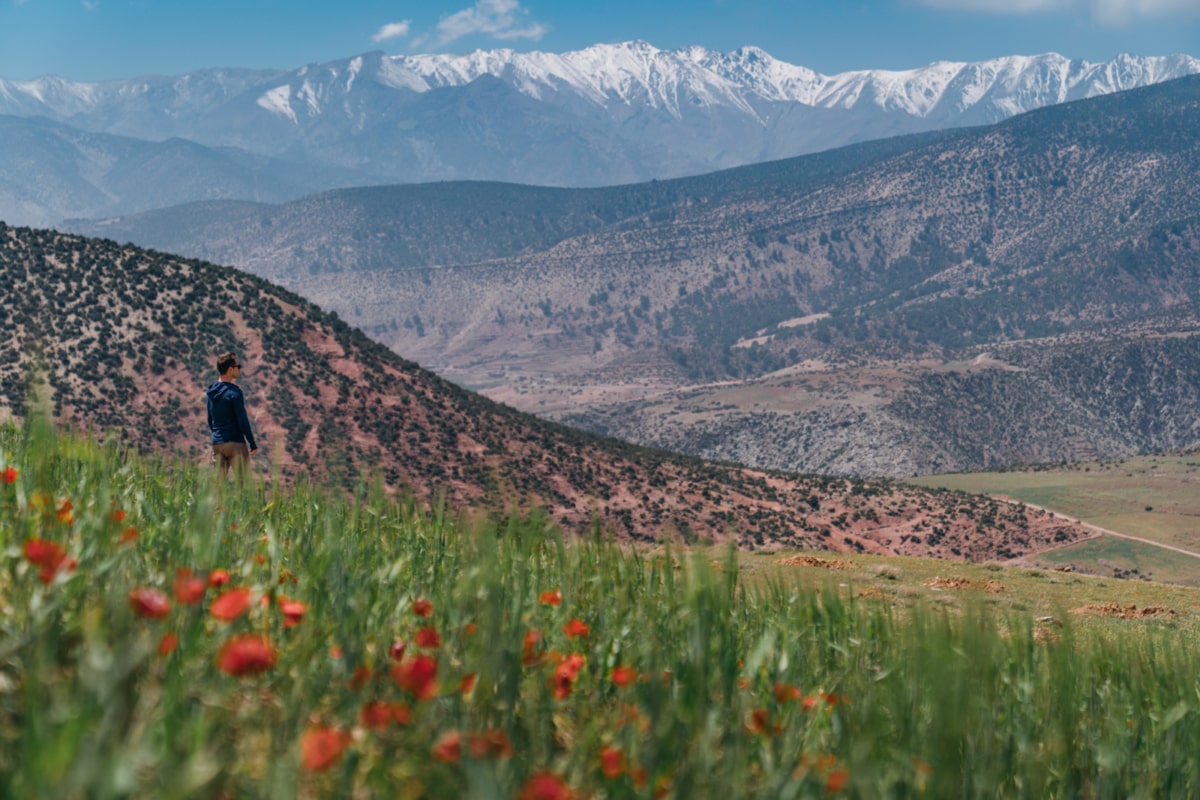
I loved this about my Nomadic Tribe experience: there was no sugarcoating anything. They didn’t try to make anything easy on me. It was real and it was raw. I traveled as the Amazigh did, with long days of hiking and walking, and it gave me some appreciation for their lifestyle.
And it’s no wonder the Amazigh people like to move about on foot. I wandered through deep green valleys, alongside gently flowing rivers and across craggy mountains. Every turn offered a new and exciting view, and my camera and I worked overtime trying to get it all in.
Participating in everyday life with indigenous tribes is one of the best ways to learn about their culture, and by walking with the Amazigh I got to explore the villages that typical tourists don’t get to experience.
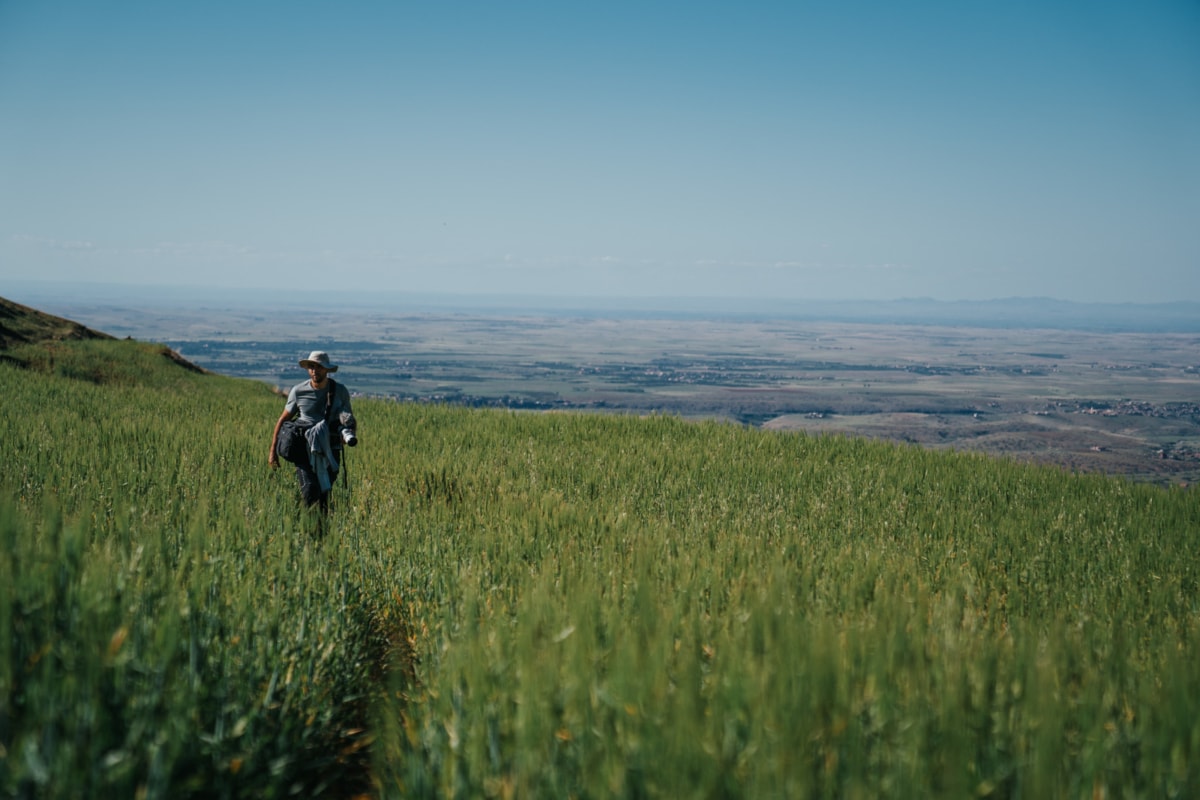
But there’s also the flip side. Although our days ended in homestays with local families, unmarried men and women sharing a room together is highly inappropriate in Muslim culture.
But where else would they put us?
Sometimes you have to weigh the pros and cons of each action, and in this case, the decision was that it’s more beneficial to be contributing to the Amazigh economy than not participating at all.
Unfortunately, tribes around the world are losing their traditional sources of income. Climate change has decreased rainfall, meaning less food for their livestock and fewer harvests.
Their habitat is shrinking, and as one of the tribe members said, “Once the last of our livestock dies, then we have no more food, and then we die, too.”
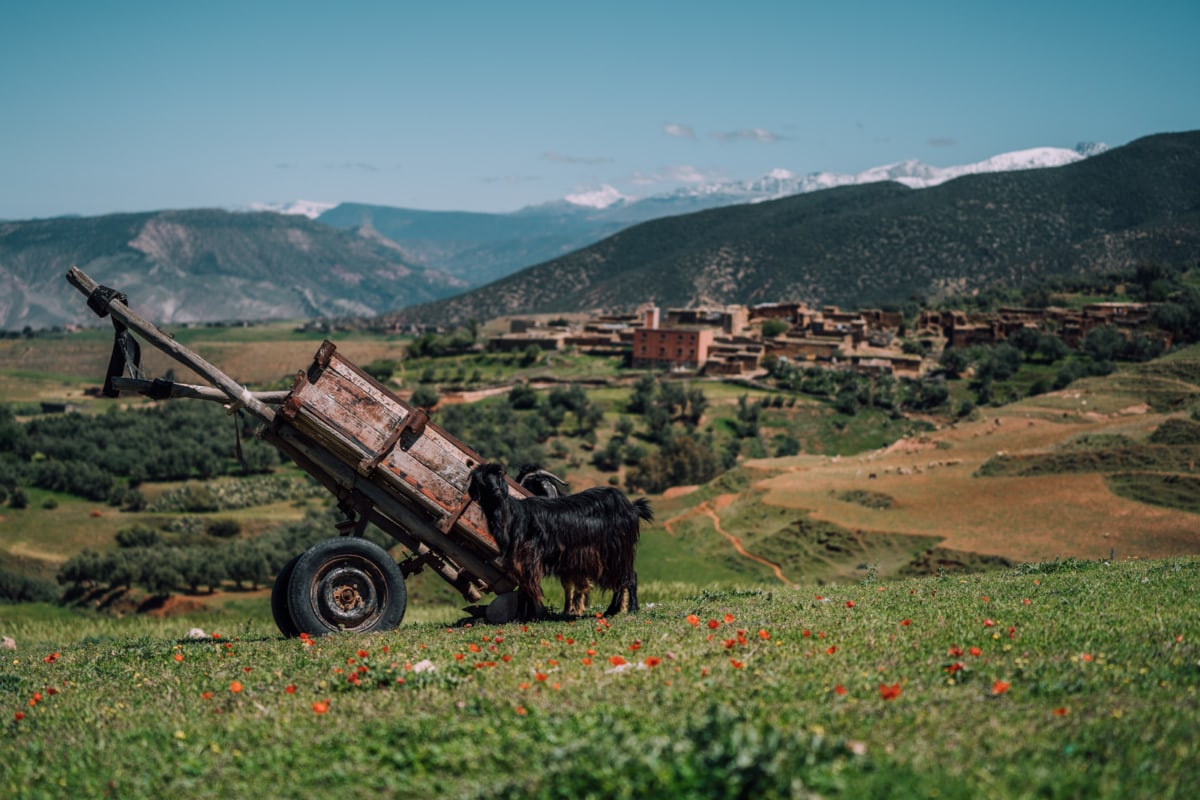
How Much Money Goes to the Local Tribe?
If you’re going to be dishing out to participate in a sustainable tour, you’re probably going to want to know just how much of that money goes back to the local tribes.
You’ll want to know how much of a cut the organization takes, and the tour guide, and the families or communities.
Companies should be completely transparent about this, and if they’re not, you’ll know something is up. In Nomadic Tribe’s case, it varies based on the duration of the experience, but on this trip to Morocco, 30% of the tour cost goes to the local villages.
Across all their trips, Nomadic Tribe donates an average of 25% of the tour cost.
Nomadic Tribe only partners with local operators that are closely related with the tribes and based in the destination. In some cases, the owners even belong to the tribes. They are people that have had the chance to study and create their own small business and help their communities.
In that case, most of the cost of the trip stays local and helps the tribes and their surroundings while helping to avoid exploitation and mass tourism.
On top of this, during your trip, you’ll also have the opportunity to buy local and support indigenous craftwork. On one of my final days in Morocco, I visited imi Ourmer where the local women’s cooperative has perfected the art of making rugs.
You know, those famous Berber rugs? This is where they come from (if they’re real, anyway).
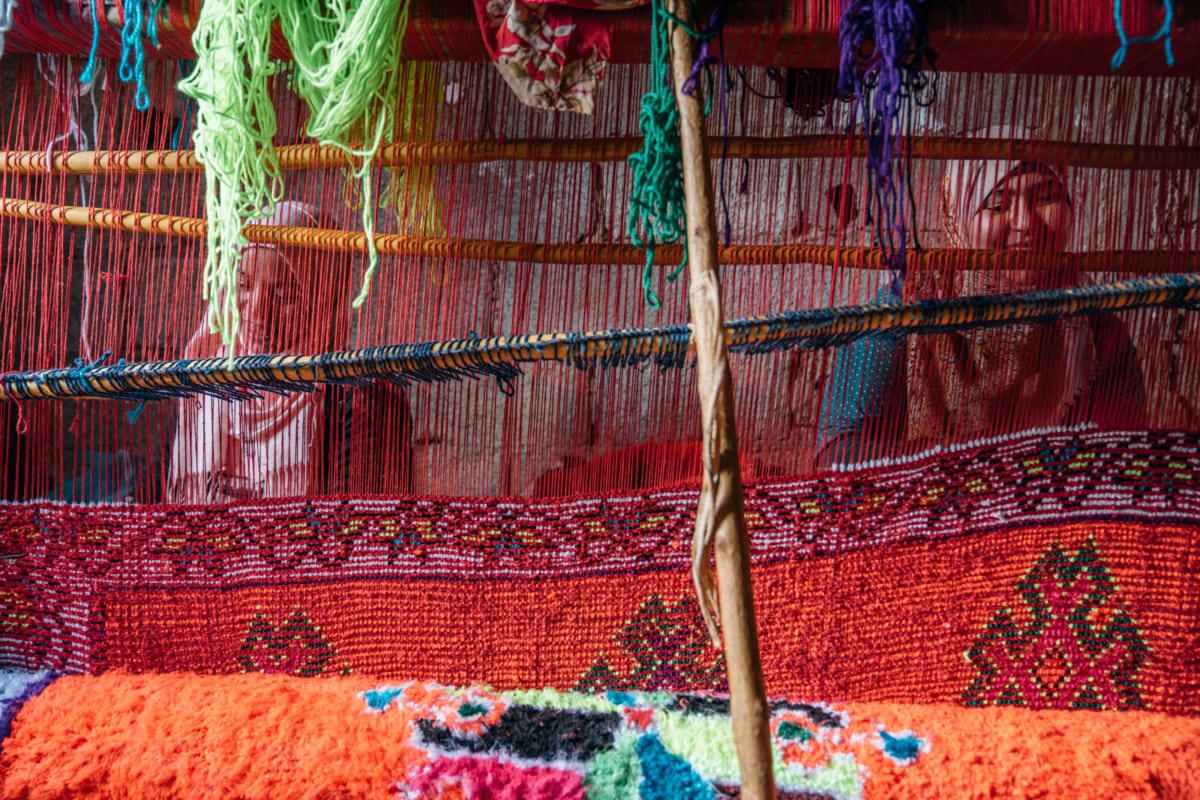 In Amazigh culture, art usually has some sort of functional purpose beyond just something to admire and look at, whether it’s jewelry, pottery, furniture, or a carpet, and certain designs are attributed to certain areas or tribes.
In Amazigh culture, art usually has some sort of functional purpose beyond just something to admire and look at, whether it’s jewelry, pottery, furniture, or a carpet, and certain designs are attributed to certain areas or tribes.
For example, Kilims (carpets or tapestries or rugs) are always made with traditional designs and motifs. A tribe from one region may use geometric designs like diamonds and triangles while another might use a completely different aesthetic.
Want to contribute to an Amazigh village’s economy? Purchase that rug. Not only are you supporting the people, you’re going home with a real, authentic, one-of-a-kind piece of art that you’d probably pay upwards of $300 for at IKEA.
What Will the Tribe do With That Money?
A good tour company should have no problem telling you how the tribe spends the money they earn. Does it go towards healthcare, or better infrastructure, or food security?
There is a lot of nuance that goes along with paying local tribes. With a new income stream, they might be earning more than they ever did previously. But does the tribe know how to manage their finances? Is there a guarantee they’ll spend the money appropriately on things that are truly needed for the community and not extraneous commodities?
Do we have the right to tell them where their money should go, and make it a condition that they only receive the money if they spend it on certain things? That’s us—an outside culture—influencing the local culture.
What kind of cultural preservation is that?
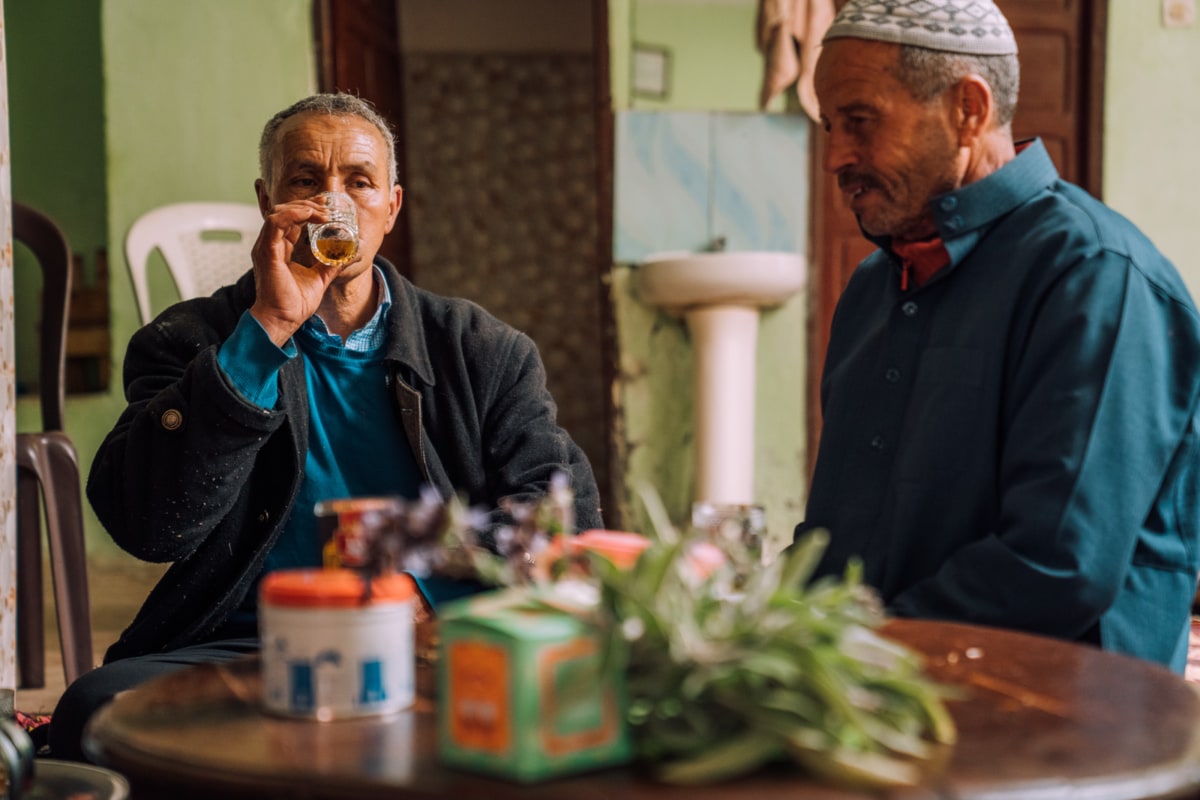
In my opinion, it always has to start with a conversation with the tribes. Asking them what they need, and helping them to get it or build it, is the best way to help. That way, we’re not imposing our ideals onto them, but instead assisting them with things like access to clean water, buying more livestock, or other things that will improve the overall wellbeing of the community without watering down their way of life.
What’s more, some tribes are so close to cultural extinction, the money received from these tours provides an income so they can literally just survive while maintaining and preserving their ancestral traditions.
If they don’t have incomes they will be forced to move to urban settlements, which is already happening. This is fine, of course, if it’s their own decision, but not acceptable if they want to keep living as their ancestors did.
Some tribe members want to live in a more modern way, but many don’t. That makes this even more complicated.
So, How Do We Preserve the Culture While Actively Participating in It?
What happens after a couple of years when the locals are so used to foreigners visiting their villages they’re hardly considered “exotic” anymore?
How do we ensure that a culture doesn’t get watered down after years of “performing” for travelers?
What’s more, who are we to say it’s our responsibility to preserve that culture in the first place? Surely, it’s entirely up to the tribe.
Right?
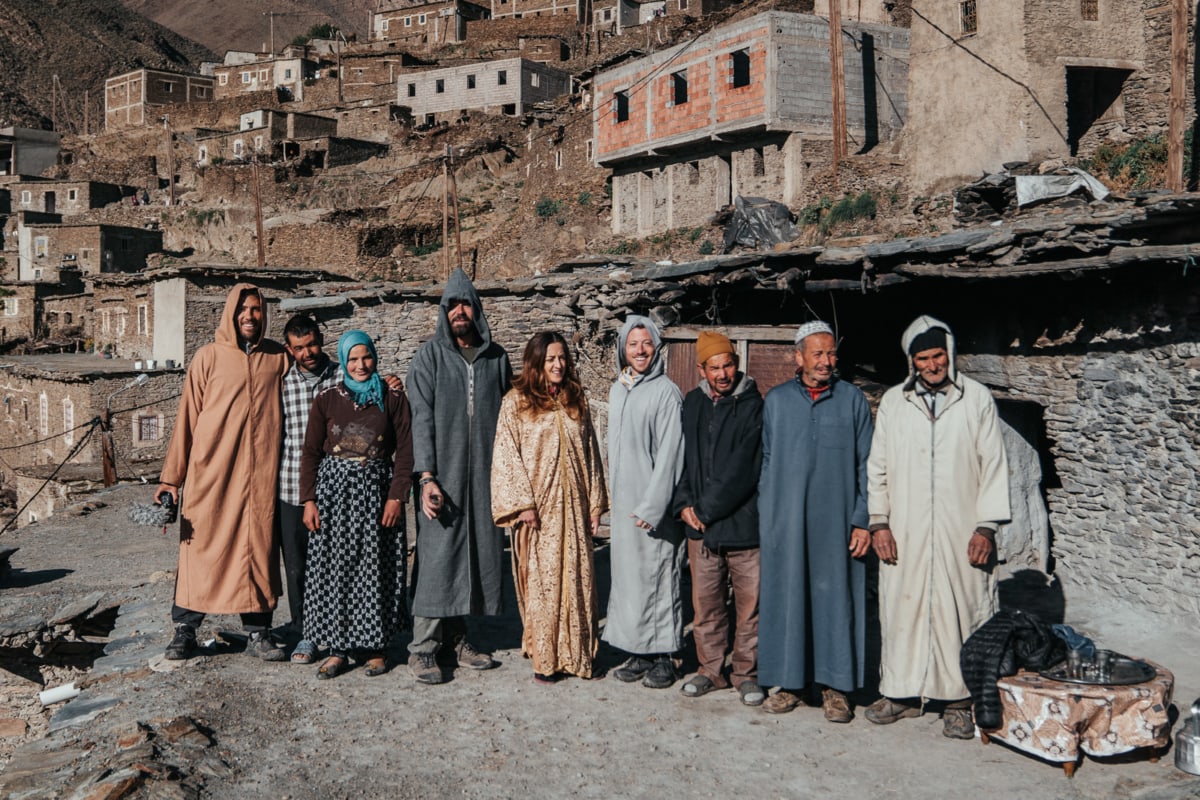
These questions are some of the most difficult to ask. But I loved Nomadic Tribe’s approach to the issues. Instead of shuttling in big buses full of tourists, they’re bringing small groups and encouraging interaction and immersion—not just observation.
When you’re contributing financially to these tribes, you’re directly helping to preserve the culture. If you buy a rug, you’re helping to sustain that age-old craft that is so deeply rooted in the culture. You’re aiding in the continuation of carpet making and helping to put food on the table.
That’s not to say you should pat yourself on the back for your good work, but your presence and contribution definitely offers an incentive.
Can I Avoid Exploitation?
What are your intentions with your visit? Are you eager to actually learn about Amazigh people, or are you simply seeking your next Instagram-worthy shot?
During my visit, I tried to snap a photo of an Amazigh woman baking bread. She quickly waved me off, a little angrily, and my guide had to step in to explain that a woman may decide not to allow her photo to be taken, and you’ll have to respect that choice. It’s just the way it is.
And this became a common theme. 99% of the time, women will not allow you to take their photo. Some did, and I captured some wonderful moments, but it was a good reminder to put my camera away and fully immerse myself in the experience.
If you are interacting with local people anywhere in the world, just remember that these are real people with real lives. You need to respect their boundaries and their homes. Leave no trace. The goal is to give back to their communities without disrupting their lifestyle.
That’s it.
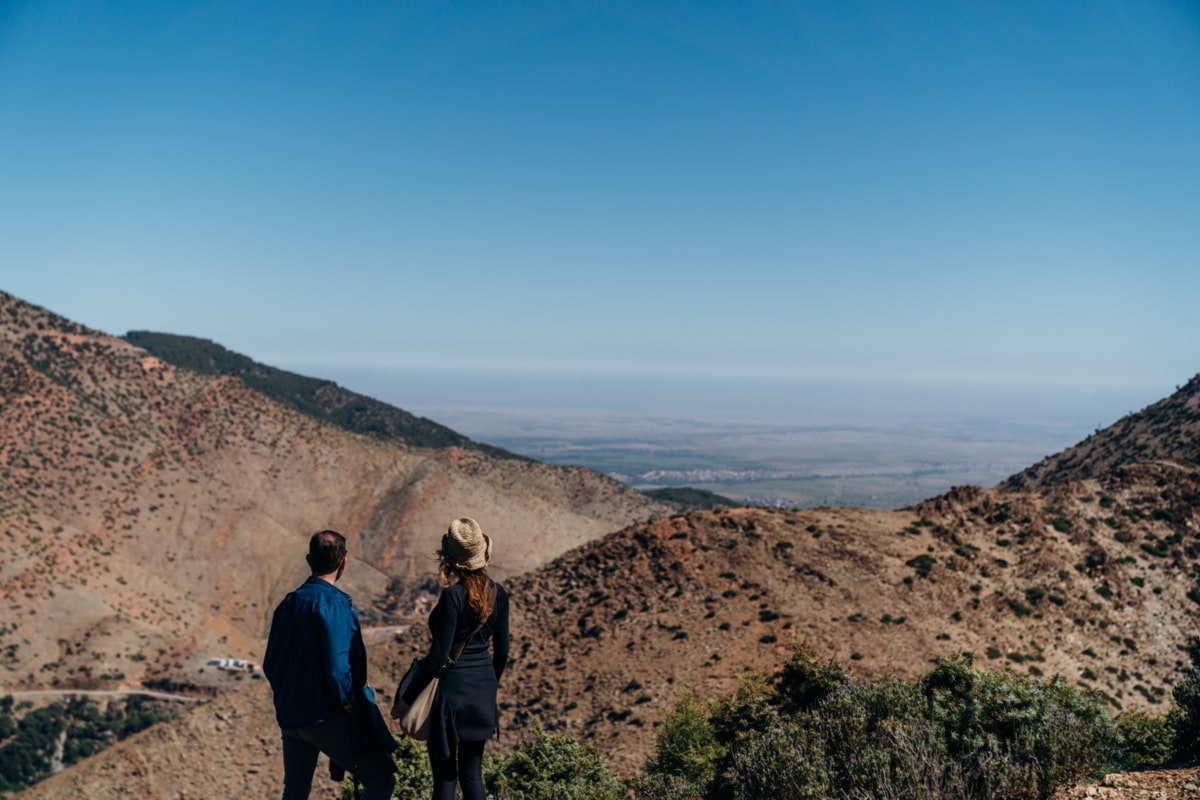
Bottom line: there is nothing black or white about participating in indigenous tourism in a sustainable way. The most important thing is to ask yourself—and any tour operator—these difficult questions. Think about them, and consider all the possibilities.
If you feel like you’re doing more harm than good in visiting an indigenous tribe, then don’t do it.
All of these experiences are learning tools to help you better understand and respect some of the oldest cultures and countries in the world. It’s a beautiful thing to be able to pass this knowledge on to others.
I loved that Nomadic Tribe connected me to local guides on the ground, and that I knew where all my money was going. Their heads and hearts were in the right place, so I decided to join them.
If you do choose to go this route, you’ll have the experience of a lifetime. Breaking bread and sipping tea with an Amazigh family while hiking through dramatic landscape views of the Atlas Mountains?
Worth every penny you spend.
READ MORE:
